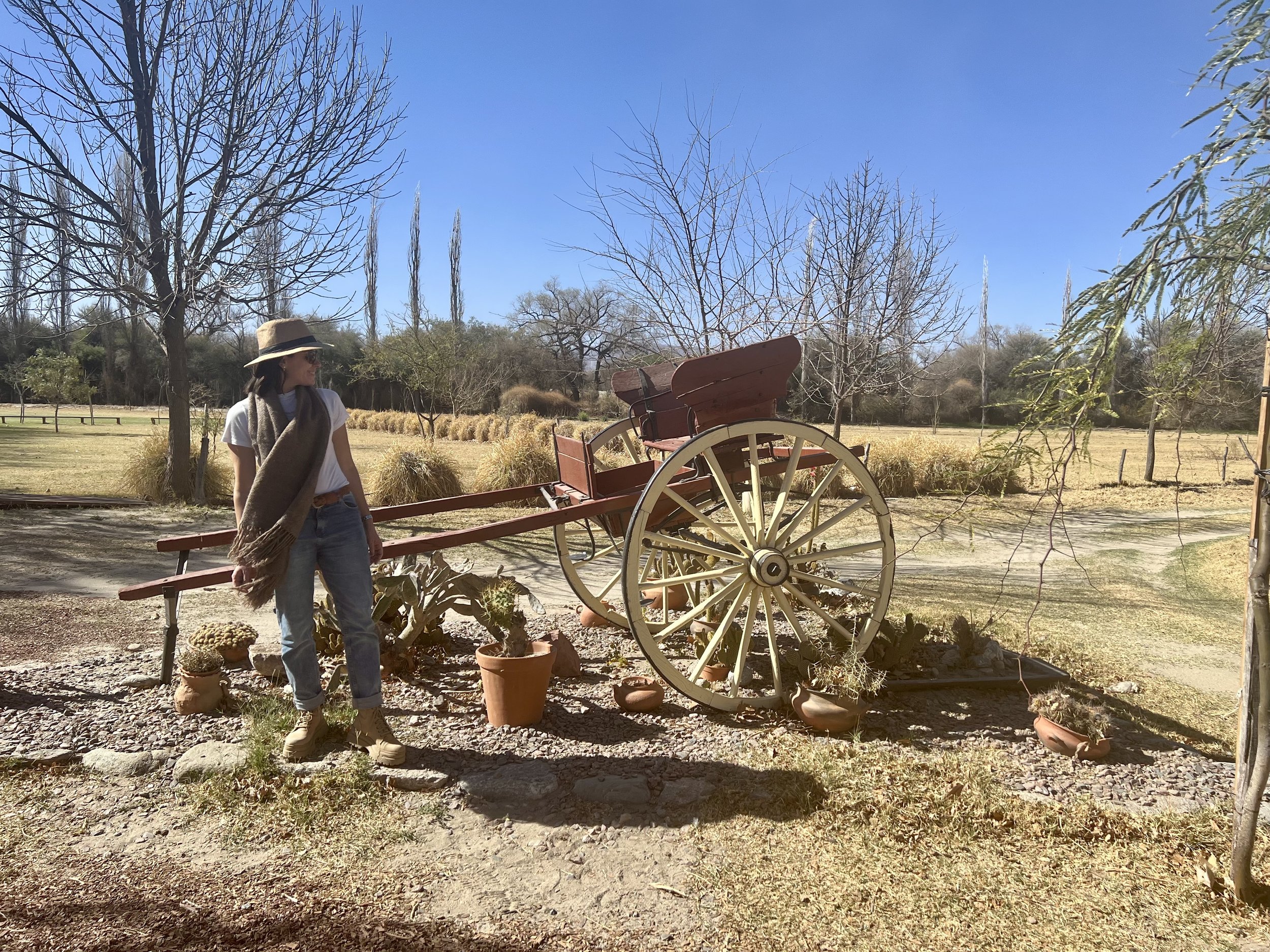Cabras de Cafayate
Production plant in the Calchaquí ValleyWhen we visited Domingo Molina Winery in Yacochuya, we knew that on our next trip to Cafayate we had to visit Cabras de Cafayate.
Just ten minutes from the town square, the Domingo family's enterprise is defined as a dairy plant with relevant production of different types of goat and cow cheeses, all of superior quality.
Before returning to the city of Salta, a long weekend in August, we arrived without much expectation, probably because of the
little sympathy generated by goat cheeses to @tripticity_.
Perhaps that's why we were so surprised, as soon as the tour of the farmyards started, when the brilliant guide Liliana began to tell us about the production process that takes place in Cabras de Cafayate.
With clarity and dynamism, she allowed us to learn about each stage of production. First, we visited the young goats' yard, which could be defined as the stage of the caprices, as they demand attention and pampering to maintain their health and optimal growth, which guarantees an unbeatable milk production. Liliana explained to us that the timetable for milk extraction is not fixed, but depends on the mood of the animals, which also have very demanding food tastes; in fact, they are not willing to eat just any grass, it is not the same if it is very green or very dry. All of which confirms the saying "...madder than a goat".
He also explained the system implemented to make the goats get all the female goats pregnant and not only the youngest and most attractive to them. A lamb is introduced into the paddock, which generates a "natural competition effect" and results in the goat serving all the female goats without making a selection.
He also taught us about the breeding and sustainability methods they use on the farm. The manure generated by the goats is used as irreplaceable organic fertilizer in Domingo Molina's vineyards, while the pomace and seeds from the vines that are discarded in the winery become rich and nutritious food for the goats.
After visiting the corrals, we went to the immaculate factory to understand the manufacturing process of both goat and cow cheeses.
Twelve liters of milk are required for the production of one kilogram of goat cheese, and if the cheese is to be seasoned, twice as much is required; on the other hand, one kilogram of cow cheese is produced for every ten liters of milk
Our visit concluded with a tasting of three types of goat cheese and three types of cow cheese, harmonized with a torrontés from the Domingo Molina winery, all at tables set up outside the showroom. A bar is being built to take advantage of the beautiful sunsets in Cafayate, we have no doubt that once this space is inaugurated it will become a success. We left with the conviction, once again, of never paying attention to prejudices. What we thought would be a conventional experience ended up turning into a wonderful hour, both for what we learned
with Liliana and for the tasting afterwards, in which, as always, @tripticity_ met a new friend from our travels. Dear Bruno, we hope to see you soon back in Cafayate!





















